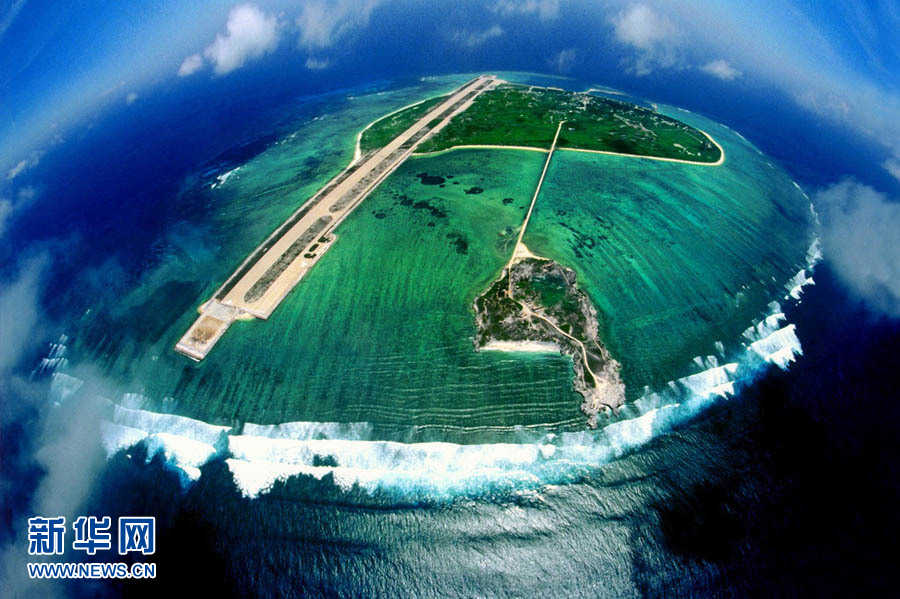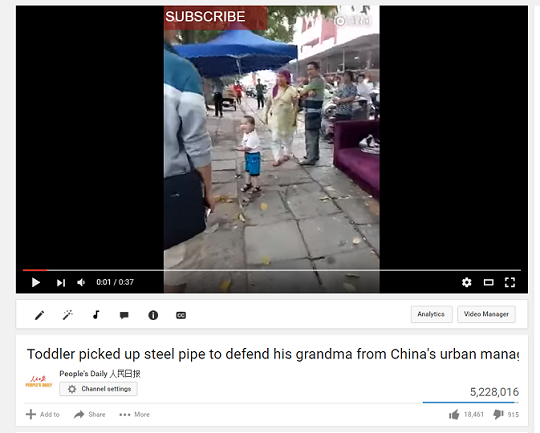


Since U.S. President Barack Obama took office, "Pivot to Asia" has become one of Washington's political pursuits and military strategies. The disputes between China and the Philippines over the South China Sea, which was provoked by former Philippine President Aquino III, came just in time as it offered Washington a good excuse and easy approach to return to the region.
In January 2013, the Philippines unilaterally initiated arbitral proceedings on the South China Sea issue. To circumvent the law, it secretly changed relative concepts, deliberately separated the Nansha Islands, and asked the tribunal to issue an award over the legal status and maritime claims of some of the islands and reefs that belong to the Nansha Islands as a whole.
What Aquino III did was a clear violation of international law. However, Washington chose to ignore the facts and the law, giving full support to its flunkey in Asia without hesitation.
So, we can tell that Washington has taken sides from the very beginning. What has it done before and behind the curtain then? Generally, it took four kinds of actions.
First, colluding with its allies to rubbish China.
Regarding the South China Sea arbitration, U.S. government officials and media have expressed many negative opinions of China, so as to portray Beijing as a "violator" of international order. U.S. Secretary of Defense Ash Carter used to say in public that China's activity in the South China Sea could lead to a "great wall of self-isolation." Japan, as an ally of Washington, was also active and enthusiastic in helping the U.S. to suppress China.
Second, showing off military force and putting pressure on China.
The U.S. has been stepping up military actions in the South China Sea recently. Particularly, in the middle of June, two U.S. aircraft carriers, the USS John C. Stennis and USS Ronald Reagan, launched joint operations in the South China Sea, staging a show of force aimed at China.
In the meantime, Japan also launched joint military exercises with the Philippines and conducted arms sales with the latter, which is meant to put pressure on China. On July 8, Washington and Seoul jointly announced the deployment of the THAAD (Terminal High Altitude Area Defense) systems in South Korea, and the ulterior motive behind it was obvious enough.
Third, playing China and ASEAN countries off each other.
Chu Yin, a research fellow at the Center for China and Globalization said that "the U.S. escalates the tensions in the South China Sea with an essential purpose of containing China." For the U.S., sabotaging the relations between China and ASEAN countries is an effective way to hinder China's development, apart from being a best solution with low cost and high efficiency to increase Southeast Asian countries' dependence on it.
Fourth, manipulating the international arbitration tribunal and complicating the South China Sea issues into a "dead knot."
Once the arbitration tribunal makes a verdict against China, it will amount to fulfilling the U.S. purpose, putting an end to the tranquility in the South China Sea. In that case, the prospects for China-Philippine disputes to get resolved peacefully will be reduced.
In addition, the United States has been calculating the timing and progress of the arbitration. Initially, the U.S. had the press leak the message that the arbitration result would be announced on July 7, making all involved parties tense. Later on June 29, the secretariat of arbitration tribunal said July 12 would be the date when the verdict on the concrete issues of the Philippine-led arbitration on the South China Sea would be made public.
The timing of the announcement totally reflected the U.S. calculations as June 30 was the date that the new Philippine President Rodrigo Duterte was to be sworn in. Picking this date to announce the verdict represents no more than a backing up of the new Philippine government, a move that the U.S. hopes will minimize the possible improvement between China-Philippine relations.
The U.S. actions near China, particularly those on the South China Sea issues, are part of its Asia-Pacific Rebalance strategies. Its intentions are no more than containing China to preserve its interests in the Asia-Pacific region and its global hegemony.
The U.S. motives are apparent to the world, especially to the Chinese people. The current China is nothing like the country it was one hundred years ago. Any act that tries to violate China's territorial sovereignty will fail.
The author is Editor-in-Chief of China.org.cn.
Day|Week

 Thai most beautiful transgender Nong Poy release new photos
Thai most beautiful transgender Nong Poy release new photos Top 10 livable Chinese cities
Top 10 livable Chinese cities The last primitive tribe in China
The last primitive tribe in China China's first intelligent security robot debuts in Chongqing
China's first intelligent security robot debuts in Chongqing A Total of 3,552 Subscribers Vanish In Two Days; YouTube Closes All Doors to Users’ Inquiries
A Total of 3,552 Subscribers Vanish In Two Days; YouTube Closes All Doors to Users’ Inquiries Out of this world! Futuristic UFO-shaped yacht has its own garden and a stunning underwater viewing deck
Out of this world! Futuristic UFO-shaped yacht has its own garden and a stunning underwater viewing deck An old tea house in Chengdu
An old tea house in Chengdu Furious Customer Crushes All the Buns from Vendor Just Because He Was Given the Wrong Flavor
Furious Customer Crushes All the Buns from Vendor Just Because He Was Given the Wrong Flavor 20 post-90s couples hold ’naked marriage‘ in E. China
20 post-90s couples hold ’naked marriage‘ in E. China Female official wearing traditional Han costume to promote local tourism
Female official wearing traditional Han costume to promote local tourism